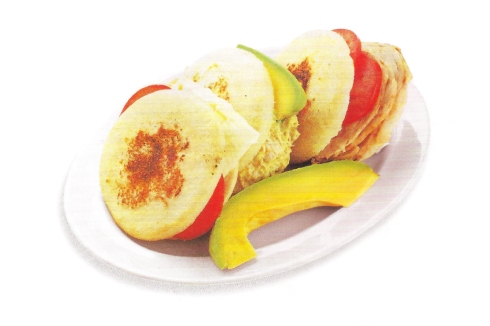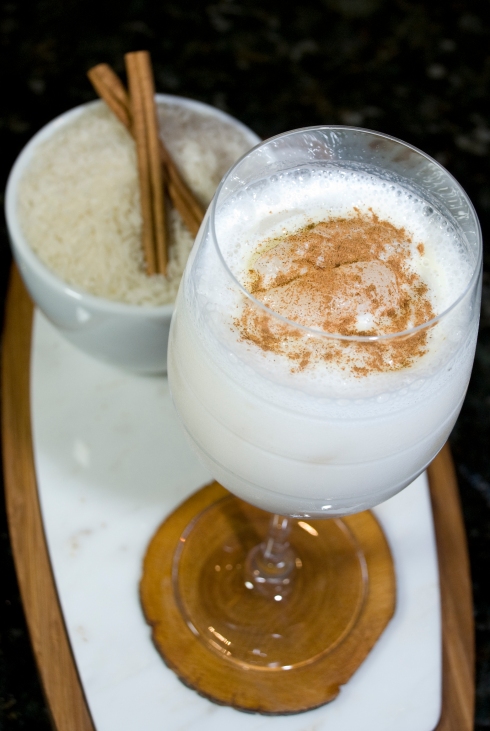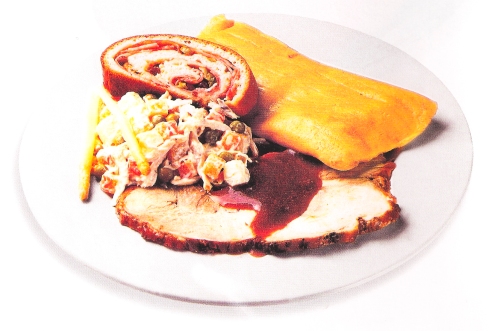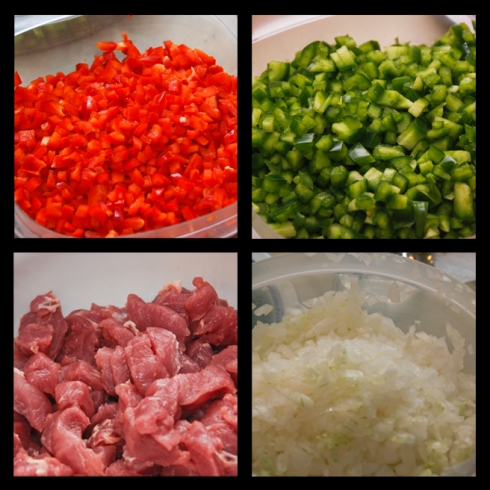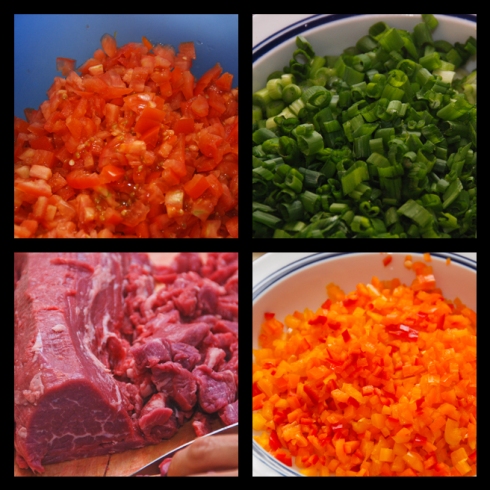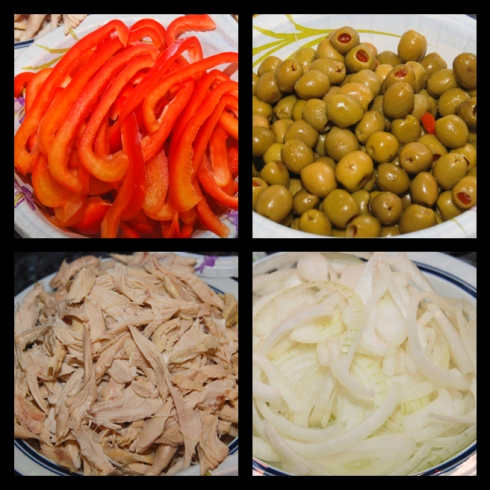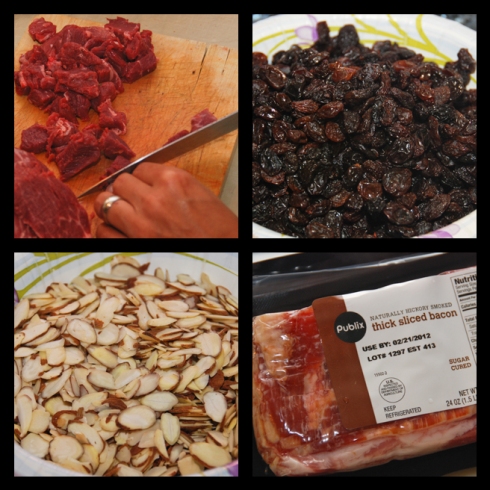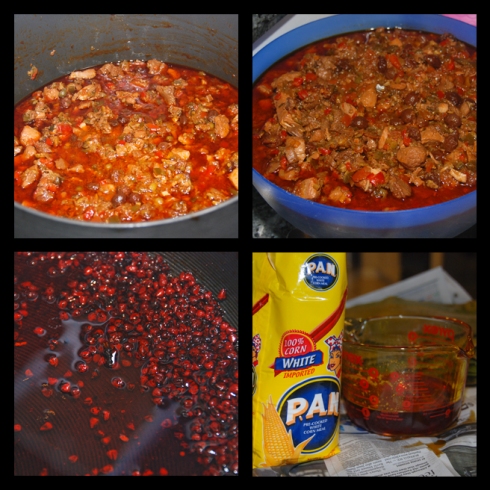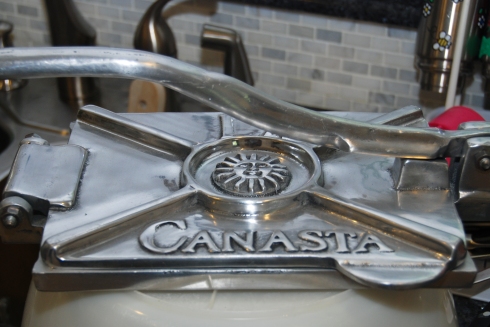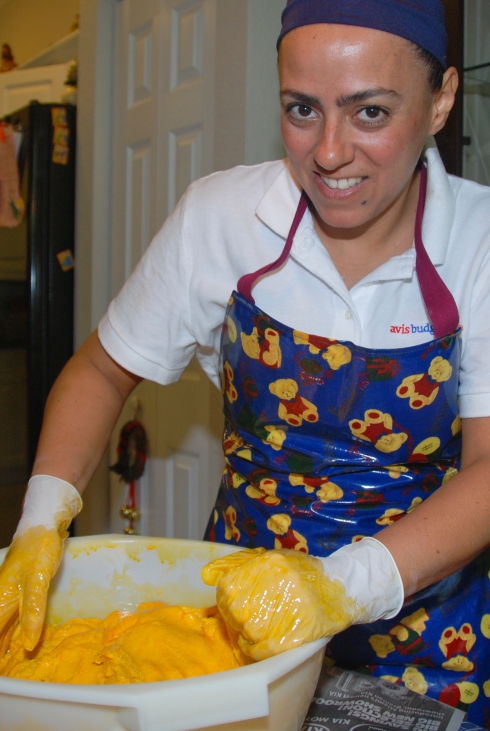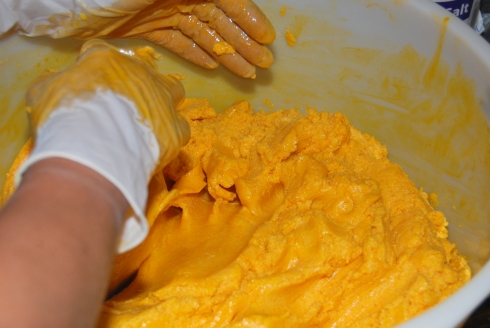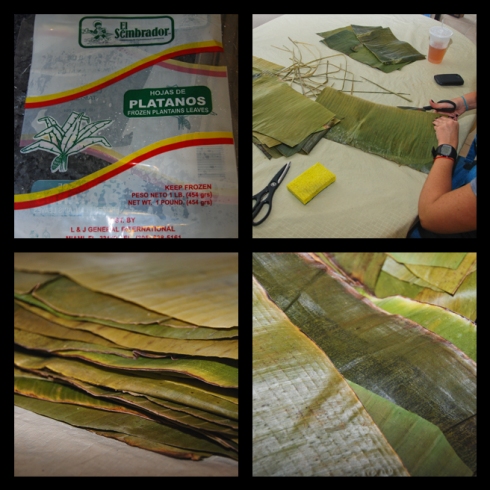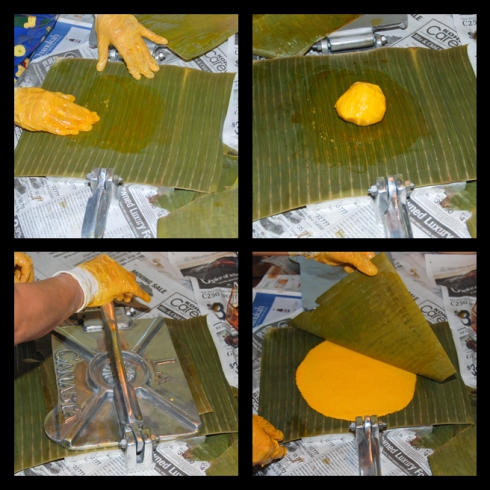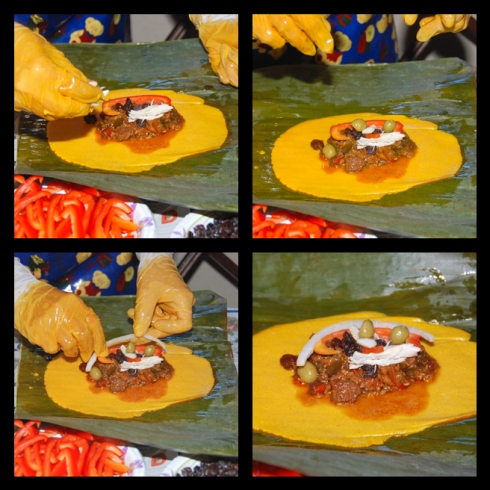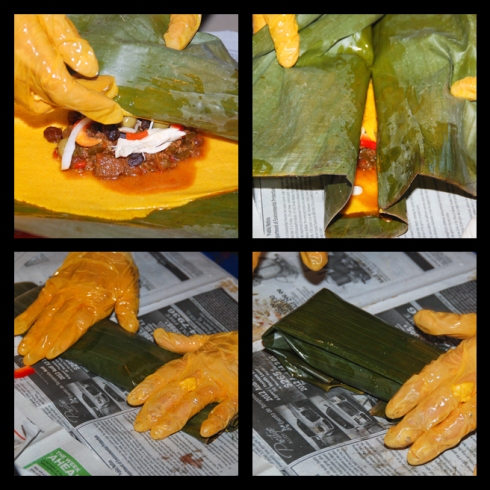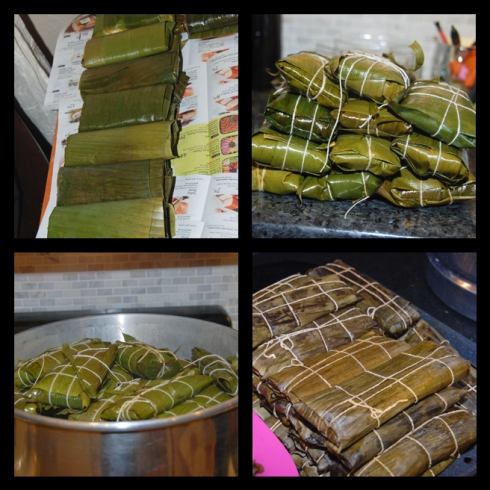For those of you who don’t know, last weekend there were presidential elections in my country, Venezuela. If you have come across this blog, then you must know a little bit about my country, and what we have been going through in the past decade. If you don’t know anything about it, I urge you to find out on your own. Google it. I don’t want to tell you one side of the story. I want you to come up with your own opinion about the situation my country is going through. Then you can continue to read my story.
Every Venezuelan who lives outside of Venezuela, has the right and the duty to go to the nearest Venezuelan consulate and vote in any Venezuelan elections. The consulate has the duty to facilitate a site and all the material necessary to hold elections in an established location. Due to the inconvenient fact that the Venezuelan consulate in Miami was closed, and the inefficient Venezuelan government has failed to reopen it, all Venezuelans in Miami and Florida have been forced to travel to New Orleans in order to exercise their right and duty to vote. This is not new. Venezuelans already had to do this in the past elections on October 7th, 2012. I was unable to attend those elections, due to personal and financial difficulties. I stayed home all day long incredulously watching the Venezuelan news channels, Facebook and Twitter feeds. I also felt incredibly guilty for not voting.
This time around, I knew in my heart I couldn’t stay at home and watch it on TV. I had to be there and make my mark. Because every vote counts and I had to do whatever I could. I still have those same personal, financial, work and family difficulties that I had last time, but I had to do what I felt was the right thing to do in my heart.
This is the story of how I exercised my duty and my right to vote in the Venezuelan presidential elections on Sunday, April 14th, 2013 from Miami to New Orleans.
The information regarding the date and location of where the voting would be held for Venezuelan voters in Miami came in only a few weeks before voting day. This wasn’t favorable for those of us who had to plan ahead in order to travel and vote. I began looking for options. Luckily, the same organizations that helped Venezuelans travel from Miami and other locations to New Orleans in October were ready to do it again this time. There were a couple of options to travel by bus and also by plane. I knew I couldn’t afford to travel by plane, so I discarded that option right away. There were at least two options that I knew of to travel by bus. I found the information through http://demiamipaneworleans.com/, http://votodondesea.com/, and through an e-mail I received from “La Hermandad Venezolana” (The Venezuelan Brotherhood). I asked every Venezuelan I knew that lived in South Florida, if they were planning on going to New Orleans to vote. I asked twice through Facebook, and only one friend answered. I felt disappointed.
I coordinated with that one friend so I wouldn’t have to travel ‘alone’. She was going to travel with her mom and dad, and she offered to allow me to come with them once they decided what travel option they would choose. Her dad even went to get a spot on the bus for me, because I live a bit far from where they sell the tickets for the bus. I will be forever grateful to her and her family for helping me find a way to travel to New Orleans, and allowing me to come with them so I didn’t have to go by myself.
Once I knew I had a way to go, I felt relieved. I planned the trip; I packed really light, and got there early and ready to go. The Venezuelan Brotherhood provided the bus we traveled in. Thanks to their efforts, and the donations they received from other Venezuelans who would be unable to make arrangements to go vote, they were able to take 55 Venezuelans on an executive bus all the way to New Orleans to vote for only $60.00 per person. This was the cheapest option. It included a round trip bus ticket to New Orleans aboard an executive bus, some refreshments and the opportunity to vote.
I left early on Saturday morning to be at Café Canela, the Venezuelan restaurant from where the bus would leave, at 3 pm. We were told to be there at 2 pm. I walked towards the establishment and I saw a man holding a clipboard and writing down names. I asked if the seats were to be assigned on first-come-first-served basis. He said yes, so I asked if I could write down my friend and her family’s name down so we could all sit together. He asked what was her name, and when I told him, he said, “That’s my daughter”. We laughed and then I went inside to grab a bite.
Since the city in South Florida where I live has little to no Venezuelan food to offer, I had to take advantage of this opportunity and have a bite at Café Canela. I had a cheese empanada and a tequeño. My friend and her mom arrived later. I hadn’t seen my friend in a while, and I hadn’t spoken to her much since I spent 5 years in Alabama. We had a lot of catching up to do.
Once we boarded the bus, I felt overwhelmed and anxious. We left at 3:45 pm from Café Canela. We were supposed to leave at 3, but there was a misunderstanding with the bus company. Everyone in the bus was excited. A couple of the organizers from the Venezuelan Brotherhood and even a couple of the passengers in the bus stood up and said a few encouraging words and prayers through the microphone. Everyone was in a good mood, and we even had a joke contest to win a hat from the Venezuelan Brotherhood. Another contest involved naming towns of Venezuela to win a shirt. The bus was filled with laughter, joy, prayers, even a domino game or two, and Venezuelan music.
My friend’s dad, who owns a Venezuelan food delivery business, even gave out free tequeños and Venezuelan snacks to all passengers. My friend and I had a lot to catch up on and discuss. And that was all we did from the moment we left until right after midnight, when we were so tired we just had to sleep.
The sleeping-in-a-bus experience wasn’t a good one. The seats were small and narrow. Not to mention the front of the bus was freezing, while the back was hot. The ladies behind us begged us to put our seats upright so they wouldn’t smash against their knees. Meanwhile the ladies in front of us had their seats reclined as far as they could go. My friend and I didn’t care. We were prepared for this trip to be tough. She had advised me to bring a pillow and a blanket and I did. However, it was still a rough first night. I barely slept. I woke up about 4 times and slept a total of about 4 hours. It rained most of the night. At some times, the soft rain tapping my window would make it easier to sleep. At other times, the bright light from the lightning would wake me up, as I felt there was someone right outside my window taking a picture with a very powerful flash.
We had several stops along the way. We wanted to keep them short since we were already running late from our delay when leaving. It was quite a funny scene. Everyone rushing, but not exactly for the bathroom or the food, instead everyone ran to be the first one to find an outlet and plug their phones, tablets and laptops. Some smart travelers, probably from traveling before in October, had brought power strips that allowed for several passengers to plug into one outlet. After plugging the devices, they could go to the bathroom calmly knowing they would be back at 100% batteries in no time.
We arrived to New Orleans on Sunday morning just after 6:00 am. We stopped at the French Press Coffeehouse for breakfast. It was pouring. I couldn’t help but laugh as I heard Venezuelans on the bus trying to figure out what kind of coffee to order. You see; this isn’t Miami. They don’t have cortaditos, marroncitos, café con leche, or guayoyos. Venezuelans are very particular about their coffee. I helped Mr. Augusto try to figure out what kind of coffee he should order. We finally concluded he would get the Café Latte and add an extra shot of espresso in order to make it seem like his favorite marroncito. I was happy to help, since I had spent 5 years in Alabama trying to order the perfect café con leche for myself. I sat with Mr. Augusto and he told me how his daughters had lived here in the US for almost 30 years. They didn’t have a Venezuelan ID, so they couldn’t vote. He told me how his wife was sick, and she couldn’t vote either. So he came alone. A couple of other passengers joined our table, the ‘charging-station’ table. Mr. Augusto was telling us about this doughnut-type thing he had once before in downtown New Orleans, and perhaps he would take a trip down there after voting just to have it again. We figured out he was talking about these famous beignets. They were sold at a famous place called Café Du Monde. Mr. Augusto didn’t realize that we were right across the street from a second location of that same Café. So he decided he was going to get up and go buy some for us to try. I decide to go with him, rain and all. We crossed the street carefully and Mr. Augusto bought two orders of three each of these famous beignets. We crossed back, soaked. And he shared them with the table, and the table next to us. These beignets were really good. They were worth crossing the street in the pouring rain.
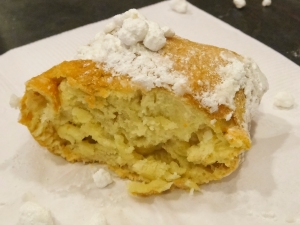
Beignet
Now that we lifted our spirits with some non-Venezuelan coffee, some fried treats, recharged our devices and visited the restrooms, we were ready to head out and vote. We arrived at the Pontchartrain Convention & Civic Center around 8 or 9 am, I can’t remember, I was too excited to care for the time. It was chaotic and it was still pouring. We weren’t sure of how the actual process would be, so we didn’t know if we should take our backpacks, or purses with us. One organizer found out that they would hold the bags for you at the door, and then give you a ticket for you to retrieve it after voting. That was a relief, since I wanted to at least change my shirt. We put on our ponchos and took out our umbrellas and got off the bus right in front of the building. My friend saw a Venezuelan actor, and we were about to take a picture with him, but we heard one of the many volunteers as she kept shouting “People from the Venezuelan Brotherhood bus: put on your ponchos, take out your umbrellas and follow me. There is a lot of walking and you will get soaked”. She took us to the right side of the building, around the building, to the back of the building. We came in through the back of the building into a big convention-like room, and began to stand in a line that went like a snake from one side of the room to the other side several times. As we stood in line, my friend’s dad said hello to many of his customers that recognized him. I heard one person say, “What’s his name again? The cheese-guy?” There was a man standing on a platform with a megaphone, and he announced he was going to say something and we should listen and sing along. He began singing the Venezuelan national anthem. Everyone started singing with him. It was an exhilarating moment. It took me back to when I was a kid and I had to stand in line in the school’s patio and sing the national anthem in front of the flag. Back then it didn’t make me feel anything but annoyed that I had to do that. Now I felt something in my heart that I couldn’t describe with words, something gave me goose bumps.
The line moved at a good pace. We finally got to a door and I gave my Air Force backpack to the volunteers and they gave me my blue ticket. I went through the doors and then realized they led outside the building. Good thing it was no longer raining. I passed a checkpoint and the girl told me what table number and what book volume I would be in and then she wrote it with a sharpie marker on my hand. She told me to go down the stairs and then make a left. So I went down the stairs towards the outside of the building, then made a left to go around the entire building again. Then I arrived at a different entrance to the left side of the building. I entered and had to go through a security checkpoint. They checked my purse and everything. Then I entered another door and finally saw the voting tables. I showed the guy my hand, and he told me table 9 all the way in the back to your right. He was wrong; table 9 was to the left. I got to the table; the lady checked my Venezuelan ID number, looked for me in the list. She told me to sign next to my name and stamp my right thumb fingerprint next to that. Then the next person, a man, told me exactly how to mark my selection on the ballot and to fold it four times. I went behind the cardboard, made my selection. Folded the paper in two (I forgot he said four), I came back out, retrieved my ID, deposited the ballot in box number 2, and then the lady proceeded to dip my pinky into the ink. She told me this wasn’t the same ink used in Venezuela, because US customs didn’t allow them to bring it into the country. So this ink would wash out easily and it was black instead of blue/purple. She told me not to rub it, so it would stick. And so I did, I kept my creepy looking black pinky all day long.
This was the first time I had ever voted in an election. I felt proud, dignified, and splendid. I felt so good, I wanted to share something with the world, and I wanted to try to inspire others to vote, so they too could feel as good as I felt. I posted the following words on Facebook (I posted this in Spanish, but here is the translation):
“Dear Venezuelans,
In the past 14 years I have seen you complaining. I have seen you in thousands of photos wearing the colors of your political party. I have seen you in manifestations. I have seen you in protests. I have seen you criticizing the other political party. I have seen you supporting your party. I have seen you making fun of the other candidate. I have seen you leaving the country. I have seen you crying. I have seen you upset. I have seen you asking all your contacts to add your new PIN number, and to delete the old one, because you were mugged and your Blackberry was stolen. I have seen you afraid. I have seen you disappointed. I have seen you willing. I have seen you defeated. I have seen you kidnapped. I have see you searching desperately for Harina PAN. I have seen you counting your bills. I have seen you in the daily traffic jam on your way to work. I have seen you going pharmacy to pharmacy in order to find your medicine. I have seen you looking for and selling your American dollars. I have seen you… or better yet, I haven’t seen you, because there was a power outage.
Sadly, and luckily I have only seen all of this through the TV, Facebook, Twitter and text messages. However, the fact that I don’t live in Venezuela doesn’t mean that it doesn’t hurt me to know that my country is going through this situation. That it doesn’t hurt to know that thieves have entered my family’s home and robbed them, while they were inside. That they knock on their car window while they drive and steal their cell phones. That I am unable to communicate with them because there is a power outage almost every day. That they have no future, because they are unable to get into the University unless they pay someone, even if they have the best grades. That they don’t receive their pension from the government. That not only they have to be strong to fight Cancer, but they also have to be strong enough to endure long lines, waiting and searching for the medications needed for the treatment. That the little money they have isn’t enough to buy the heart medicine required for them to be able to sleep at night. That they are afraid to go outside of their homes every single day. That they are unable to find jobs. That they are unable to come visit me and attend my graduation because it is impossible to find American dollars and even if they could find them, the little money they have isn’t enough. That they have to sell what little they own because they are afraid it will be taken from them.
For all of this and a whole lot more I am here in New Orleans. After paying for my bus ride. After 16 hours in a bus, after 860 miles. After sleeping only a few hours. After the neck pains. After being soaking wet from walking under the rain. After my much needed morning coffee to get enough energy. After standing in line to enter the Pontchartrain Center.
I have proudly exercised my right and my duty to vote for my country.
Please, consider what is at stake here and vote; it doesn’t cost you a thing. And if it does cost you a little, I think it is worth it.”
After I voted, on my way out of the voting room, back into the large convention-like room and out towards the front of the building, I picked up my backpack. I waited for my friend, and as I was waiting I noticed that a woman on the outside of the building asked a security guard if she could go back inside to use the bathroom. He told her that once outside you couldn’t go back inside. Once my friend came out, I told her I was going to use the bathroom before I went outside of the building. I just wanted to change my shirt and use some moist towelettes I had brought to attempt to freshen up. In the bathroom there were two lines, one for the stalls and another one to charge the phones. I changed my shirt and freshened up, washed my face and brushed my teeth, brushed my hair and put some makeup on. I couldn’t help but remember that movie ‘The Terminal’ with Tom Hanks.
I left the building and looked for my friend and her parents. They were deciding whether to stay there in the outskirts of the building where other Venezuelans who had already voted were dancing, singing and waving the Venezuelan flag, or if they wanted to take a cab and go somewhere like downtown, a shopping mall or restaurant elsewhere. The cab fare was a bit pricey, so I decided to stay put and simply wait for the bus drivers to take their required sleeping time before we headed back to South Florida. The rest of the day was mostly sunny, but still a bit windy, and cloudy at times.
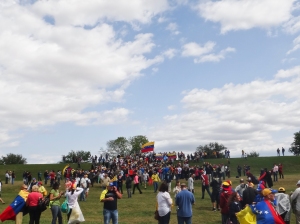
Venezuelans Vote In New Orleans
I felt right at home, listening to Venezuelans discussing politics, singing Venezuelan songs with their cuatros, dancing and making this voting experience a celebration of our rights and duties. I walked around with some little cards I had printed out to promote this blog. As I handed them out to random strangers, it felt more like handing them out to members of my family or friends. I would say “Here you go, free Venezuelan recipes online”, and people would say, “great, thank you”. Some would ask questions about what kind of recipes I had and even share their recipes and stories with me. I walked back and forth all over and around the building and interacted with everyone I could. Of all the people there, I only saw two Venezuelans friends, one from South Florida, and another friend who went to my same school in Venezuela. I saw the voters who came from South Florida by plane later on during the day. They certainly seemed a lot more rested and refreshed than the early bus-traveling voters. But they all had the same energy and enthusiasm to vote.

Venezuelans Vote In New Orleans
It was almost time to leave. We had to be back at the bus at 3 pm. So we walked towards the bus passing the hotel next to the Civic Center. Once we got there we had to wait around 15 minutes in order for the bus to cool down, because the inside was very hot from sitting in the sun all day. Before we left, we took a group photo in front of the bus. After boarding, people’s hopes were high. We expected a big win. Several voters on the bus shared their prayers, their stories and more.
One traveler, the son of one of the organizers, was unable to vote. He had already voted back in October, but this time his ID was questioned and he wasn’t allowed to vote. I felt bad for him, he traveled so far, he was the designated bus ‘flight-attendant’, he passed out all the sandwiches, drinks and even took our trash, but he wasn’t allowed to vote. Another traveler, Mr. Pedro told his heartbreaking story, of how his daughter is still in Venezuela, graduating this year from college and as he choked up, he told us how he hasn’t seen her, kissed her or hugged her in 5 years, and how he has to tell her he loves her via text, Facebook, and tweets. I really sympathized with Mr. Pedro, because I haven’t seen my mom since August 2007, and my dad since September 2006.
There was an 80-year-old couple, in the front of the bus. They were originally from Cuba, and immigrated to Venezuela a long time ago. They lived in Venezuela for a long time; I think a decade or so. They came to the US most recently escaping a second dictator. They were an inspiration, not only were they married for a long time, but they seemed so loving and romantic still, holding hands almost the entire trip. But they were also an inspiration, at that age, to take such a long trip of around 860 and then back, just to cast their vote for a second home, a second country. Truly inspirational.
Another couple of travelers didn’t travel to vote. They were a reporter and a photographer from South Florida’s Sun Sentinel. They came along the trip with us, they endured the same heat, rain, cold, cramped, long tedious journey just to document our stories. Doreen, the reporter, shared with us how she had lived in Venezuela, how she had been there documenting the massacre during the protests back in April 2002. How she interviewed a teacher who had witnessed a victim dying right in front of her. She expressed how that time in Venezuela was tough for her, and how she hasn’t visited Venezuela ever since. Then she told us how much she had enjoyed this trip. Reconnecting with Venezuelans, our culture, our people, some words she had forgotten, and how she was glad she could join us on this journey. Read her story here, watch a video here, and view photos from photographer Michael here.
Several other travelers stood up, took the microphone and told their stories and prayers. Then we made a couple of stops. Everyone was mostly worried about charging their devices so we could see the results as they were announced. After the last stop, as we all had our batteries filled to the max, we waited for the results. Once we heard it, the bus was just silent. We couldn’t believe it. We were upset, sad, we felt indignation, and we didn’t know what to say. I personally couldn’t contain the tears. My friend hugged me, and comforted me, but there was nothing anyone of us could do… after everything we did do. I was so tired and sad, I barely texted my husband and my sister, and I fell asleep. The rest of the night I mostly heard discontent, rain, sniffles, crying, snoring, and the bus’ horn. We stopped a couple more times before we made it back home. The ride was uncomfortable, I couldn’t sleep, but at the same time I was so tired that I couldn’t wake up. It took all my energy to just get up every time we stopped, and get off the bus to go use the bathroom. The ride back was definitely the worst. Defeated, tired, hungry, cold, and sad.
Once we made it back home, it was Monday morning around 8 am. We still had some energy left, and maybe some hope that something could still be done. Demand a recount. That is our hope.
As I hugged my husband when he came to pick me up, as I ordered another empanada an a tequeño, and an arepa at Café Canela, and as I told this entire story to my husband, all I wanted to do was to be there, in my country, figuring it out, protesting, demanding a recount. But there is little I can do from here now. I can listen to the news all day long, I can post on Facebook and twitter any important news I find, I can write this blog, I can urge people to sign this petition to Call upon the International Community to urge that a full recount of votes be done in Venezuela’s presidential elections, but that is as much as I can do. What I could do, I already did. I voted, and no one can take that away from me.

Vote
Tags: Bus Ride, current-events, Elections in Venezuela, Florida, Food, Informative, Miami, Miami to New Orleans, New Orleans, Politics, South Florida, Traveling, Venezuela, Venezuelan, venezuelan consulate in miami, Venezuelan Elections, Venezuelan Food, venezuelan news, Venezuelan people, Vote, Voting







